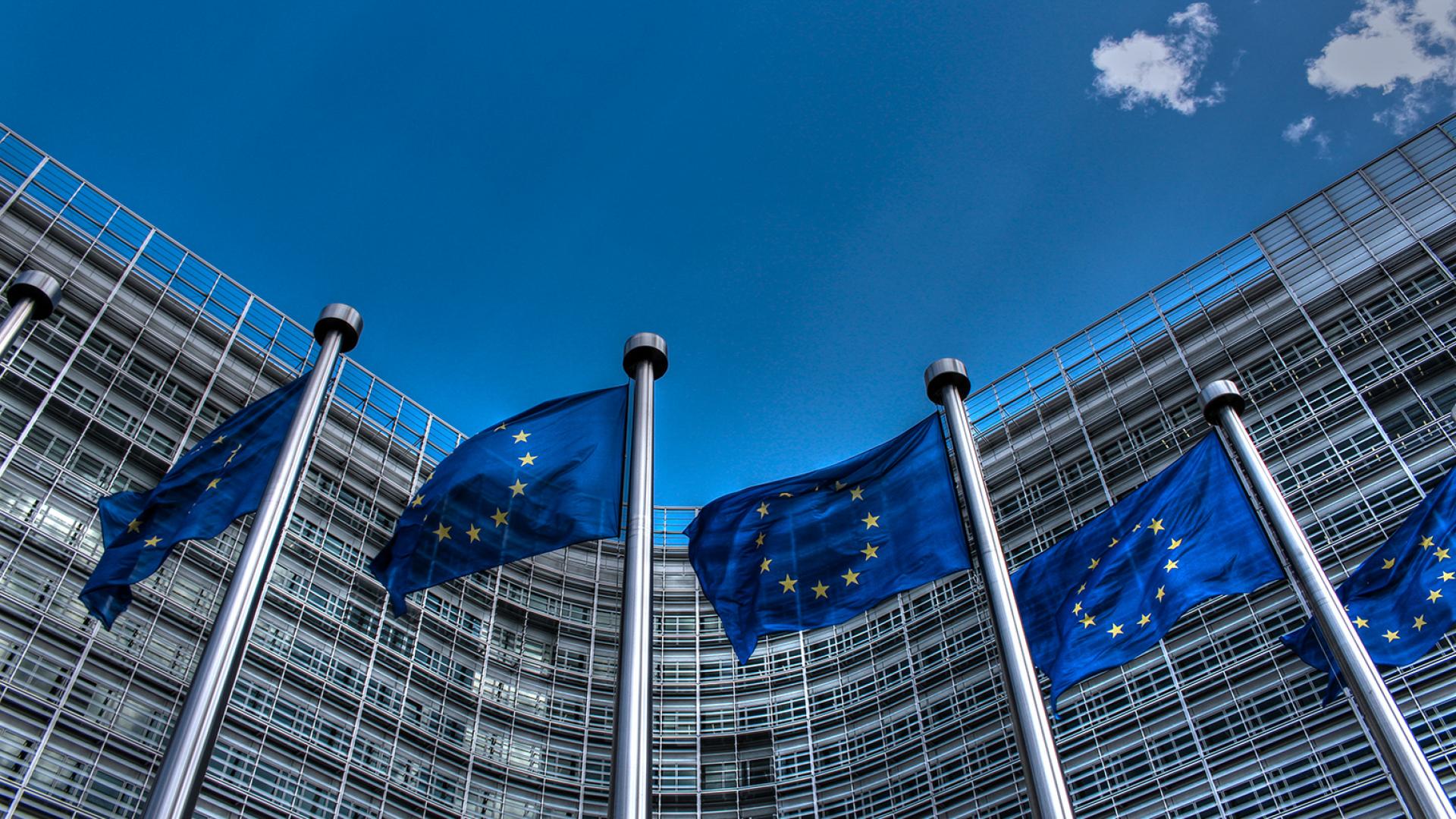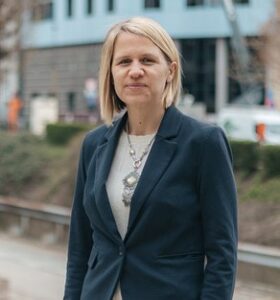ASTANA – Cooperation between Central Asia and the European Union (EU) is taking a new turn amid the ongoing geopolitical shifts and will continue to grow with a focus on connectivity, sustainable growth and economic development, according to experts.

EU flag in Brussels. Photo credit: eumetsat.int
“Since the Central Asian countries gained independence, we have had stable strategic relations with the EU. This relationship is time-tested,” said Yersultan Zhanseitov, an expert in the Astana-based Institute of World Economy and Politics (IWEP), in an interview for this story.
He noted the enduring interregional dialogue and partnership.

Yersultan Zhanseitov
“Сonstructive interaction in the political, economic and humanitarian spheres is expanding. But undoubtedly trade, economic and investment cooperation is one of the most important areas of cooperation,” said Zhanseitov.
The EU’s current engagement with Central Asia is strongly driven by geopolitical considerations, Fabienne Bossuyt, an associate professor at the Ghent Institute for International and European Studies (GIES), told The Astana Times.
“This is also reflected in the EU’s current long-term strategy for Central Asia, which was launched in 2019. The strategy sought to respond to several of the developments that had shaped the trajectories of the Central Asian countries in the previous years, and this includes the importance of Russia and China as the region’s main external partners. This explains why the strategy states that the EU seeks to have a ‘non-exclusive’ partnership with the Central Asian countries. In this way, the EU wants to signal to the Central Asian countries that it endorses their pursuit of multi-vector foreign policies but that it is also aware of the (sometimes difficult) geopolitical balancing act they are in,” said Bossuyt, whose research focuses on EU external policies and the bloc’s relations with Central Asia.
She also said Central Asia had gained further “geopolitical relevance” since the start of the war, with EU diplomats increasingly visiting Central Asia, “hoping not only to fill the power vacuum that they assumed to be emerging in the region, but also to secure more access to alternative energy suppliers, as energy reliance on Russia became off the table.”

Prof. Dr. Fabienne Bossuyt. Photo credit: ugent.be
Bossuyt noted part of Central Asia’s interest in closer cooperation with the EU lies in the EU’s “specific added value” in several fields, including higher education, science and innovation.
“Last but not least, the EU is also an important donor, especially for Kyrgyzstan and Tajikistan, which remain highly dependent on foreign funding,” she added.
Yet, according to the expert, there are limits to the EU’s engagement in the region, partially because of distance and the limited budget available for the region.
“While the EU has an ambitious strategy for Central Asia, the region is not a key priority, and hence the budget available for strengthening ties with the Central Asian countries remains limited, especially in comparison to what China and Russia can offer to the region,” she added.
During his visit to Astana in October 2022, President of the European Council Charles Michel called the first-ever meeting with Central Asian leaders a “powerful symbol of our reinforced cooperation and a strong signal of the EU’s commitment to this region.”
“Central Asia and Europe are coming closer together and becoming more and more connected,” said Michel.
Promoting connectivity is a common interest
EU’s Global Gateway strategy, adopted in 2021, is an important initiative in terms of cooperation in transport and connectivity with the region, said Yersultan Zhanseitov.
“To some extent, this European initiative is similar to China’s Belt and Road initiative. One of the main directions is access to the countries of Central Asia, including through the Caspian Sea. In this regard, interests are entirely aligned. We are also interested in alternative access to Europe via the Trans-Caspian route,” said the expert.
Bossuyt noted the EU’s connectivity agenda for Central Asia entails a digital and transport pillar and cuts across an intra-regional and interregional dimension as the countries also try to shield themselves from the impact of Western sanctions against Russia.
“Contrary to what the EU would like to see, trade between Russia and the Central Asian states has increased significantly as a result of the sanctions. Nevertheless, the Central Asian states are aware that there are still opportunities for increasing trade with the EU in the current context. In this regard, facilitating the transport routes between Central Asia and Europe is an important element. This has shifted attention to the so-called Middle Corridor, or Trans-Caspian International Transport Route, as this transcontinental trade route bypasses Russia,” said Bossyut.
Addressing a press conference during his visit to Kazakhstan in November, EU High Representative for Foreign Affairs and Security Policy Josep Borrell also emphasized the importance of seeking alternative routes. He said the EU, with its European Investment Bank, could invest nearly €300 billion ($325 billion) in investment projects, mainly on connectivity infrastructures.
Improving the business environment is a must for regional policymakers to attract more foreign companies and boost growth.
So far, Central Asia’s economic forecasts are promising. According to the European Bank for Reconstruction and Development (EBRD), GDP in Central Asia is set to grow by 5.2% in 2023, an upward revision of the bank’s autumn forecast, propelled by the relocation of companies from Russia, advancements in governance, rising commodity exports, and the reopening of China. Growth in 2024 is expected to reach 5.4%.
Regional cooperation in Central Asia
EU sees the importance of promoting regional cooperation in Central Asia, said Bossyut, envisioned in the first strategy for Central Asia in 2007.
“However, the focus today is more on promoting regional cooperation than on regional integration, as the EU realized that regional integration within Central Asia is not yet a feasible goal. Regional cooperation is considered by the EU as a key instrument in achieving other important goals, including economic development and sustainable growth,” she noted.
The EU-Central Asia Economic Forum on May 18-19 in Almaty will be a major event to promote multi-faceted cooperation, gathering senior government officials from both sides to explore ways to deepen the engagement in three key priority areas – green and digital transition, better business environment, and trade and connectivity.
30 years of cooperation between Kazakhstan and the EU
Among the countries within Central Asia, Kazakhstan has emerged as a key player, fostering close ties with the EU. Kazakhstan was the first country in Central Asia to sign the Enhanced Partnership and Cooperation Agreement (EPCA) with the EU. The document was signed in 2015 and came into force in March 2020, covering 29 areas of cooperation, including economic and financial cooperation, energy and transport, environment and climate change, employment, culture, education and research.
2022 has been packed for Kazakhstan-EU relations. EU High Representative for Foreign Affairs and Security Policy Josep Borrell paid an official visit to Astana in November, a month since Charles Michel’s visit to the country. Both visits advanced bilateral ties amid challenging geopolitical and economic circumstances stemming from the war.
Trade was on top of the agenda. Kazakhstan is the EU’s key trade partner in the region. Bilateral trade hit $41.8 billion in 2022, according to data from the Kazakh Bureau of National Statistics, up from $31.5 billion in 2021.
Exports reached $33.9 billion, and imports made $8 billion. Within the EU, Italy is Kazakhstan’s largest trade partner, with trade turnover reaching $14.8 billion in 2022. Kazakh exports to Italy made $13.9 billion.
“The bulk of Kazakhstan’s exports, particularly hydrocarbons, more than 40%, go to Europe. In this context, trade and economic cooperation with EU is at the forefront. Over the past year since the conflict in Ukraine, Kazakhstan has become a reliable and stable haven for global companies, including those who have relocated from Russia, but also those who still retain interest in the post-Soviet space,” said Zhanseitov.
Data from the Kazakh Foreign Ministry indicates EU investments in Kazakhstan increased by 23% to $12.5 billion in 2022.
Promising areas
Regarding new areas for cooperation, Zhanseitov sees considerable potential in rare earth metals and uranium.
“As we see now, The energy mix is beginning to change as a result of the shift away from hydrocarbon burning and toward renewable energy sources. This, in turn, requires a large number of rare earth metals, and Kazakhstan is one of the key players here,” said the expert.
In November, Kazakh Prime Minister Alikhan Smailov and President of the European Commission Ursula von der Leyen signed a memorandum of understanding on a strategic partnership in raw materials, batteries and renewable hydrogen on the sidelines of the COP27 climate change conference in Egypt.
This partnership, which builds on the EPCA, has three key areas – closer economic and industrial integration, increasing the resilience of raw material, battery and renewable hydrogen supply chains, and closer bilateral cooperation on capacity-building, skills and research and innovation.
On May 15, Kazakh Deputy Prime Minister and Foreign Minister Murat Nurtleu was on his first official visit to Brussels, where he met with senior EU officials, including Borrell. The diplomats outlined sustainable connectivity, green transition, and critical raw materials as priority areas of cooperation.


